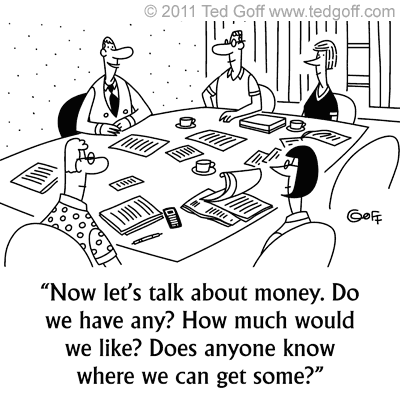How to Ask for Money in 2020
Most of our nonprofit clients rely on philanthropic support for a portion of their operating budgets. The successful fundraisers among them know the importance of soliciting contributions from a wide range of prospects. But figuring out where to start can be daunting.
Our How to Ask for Money road map has been guiding organizations of all sizes for the past five years. We decided it was time to update and expand the original with new insights that are essential for fundraisers in 2020. We’ll share this easy-to-follow resource over the next several weeks, starting with the all-important first step: (knowing) and making your case.
Step 1: Make Your Case

“The New Yorker, September 13, 2010”
A well-worded Case Statement is a critical component of any fundraising proposal, and it can also be used as a “leave behind” after an in-person solicitation. Whatever form it takes, whether it’s a short video with a solid script and compelling audio and visuals or a well-designed printed piece, your case statement should include the following elements:
- The challenge. What is the problem your nonprofit is working to address, or the need you intend to meet?
- Your approach. What makes you unique? In a crowded field, how does your nonprofit stand out from others seeking to address the same challenge? In this section of your case, the focus should be less about what your nonprofit does and more about how you do it.
- Your impact. Outputs—like the number of people served, exhibitions produced, or scholarships given—are important, but outcomes even more so: What positive changes can be attributed to your approach? What difference do you make to those whose lives you touch?
- True stories. Illustrate your case with real-life examples that demonstrate happy endings tied directly to your nonprofit’s work.
- The risks. Potential donors understand that many factors affect proposed projects, especially in the nonprofit world. If your case is for a specific project or initiative, outline your plan to shift course or recalibrate if it hits a roadblock. If your case is for unrestricted or overall operating support, include examples that demonstrate your organization’s ability to adapt to large-scale shifts without sacrificing your underlying approach or impact.
Up next in How to Ask for Money: Partnering with your Board

“The New Yorker, September 13, 2010”
Previously in our How to Ask for Money road map, we outlined the all-important first step: making your case. Now that you’ve articulated your nonprofit’s challenge, described your approach, highlighted your impact, made it real, and acknowledged the risks, you’re ready to focus on your nonprofit’s most important fundraising asset: your board. No matter their level of personal wealth, a high-performing board plays an active role in generating contributions for your organization. Below are a few simple rules for engaging with your most committed supporters.
Step 2: Partner with your Board

“Ted Goff, 2011”
- Board members are your first responders… Regardless of the size of your board, each member should understand and expect that they will be asked to contribute to the best of their ability. Communicating this clearly is an important part of recruitment and new member onboarding and will lay the groundwork for a future ask. On a larger board, setting and communicating a minimum gift level may be desirable as a way to ensure a sense of parity among members.
- …and your ambassadors. In addition to contributing what they’re able, each board member should understand that fundraising is a shared responsibility, even if fulfilled differently. Ways to contribute include: signing year-end appeals (good); making an introduction to a prospective donor (better); and participating in a solicitation meeting (best).
- Thank you! Next? Board members are human beings, and what human being doesn’t appreciate a sincere and thoughtful acknowledgment of their generous contribution, financial or otherwise? Respectful and successful board leaders and nonprofit executives take time to recognize and celebrate board members for their personal gifts and fundraising efforts. Bonus: public positive reinforcement provides a healthy form of pressure among their peers.
Up next in How to Ask for Money: Relationship Building

“Ted Goff, 2011”
